
Aerospace and defense company Curtiss-Wright (NYSE: CW) met Wall Streets revenue expectations in Q3 CY2025, with sales up 8.8% year on year to $869.2 million. The company’s outlook for the full year was close to analysts’ estimates with revenue guided to $3.44 billion at the midpoint. Its non-GAAP profit of $3.40 per share was 3.3% above analysts’ consensus estimates.
Is now the time to buy Curtiss-Wright? Find out by accessing our full research report, it’s free for active Edge members.
Curtiss-Wright (CW) Q3 CY2025 Highlights:
- Revenue: $869.2 million vs analyst estimates of $867.4 million (8.8% year-on-year growth, in line)
- Adjusted EPS: $3.40 vs analyst estimates of $3.29 (3.3% beat)
- The company slightly lifted its revenue guidance for the full year to $3.44 billion at the midpoint from $3.41 billion
- Management raised its full-year Adjusted EPS guidance to $13.08 at the midpoint, a 1.8% increase
- Operating Margin: 19.1%, in line with the same quarter last year
- Free Cash Flow Margin: 20.2%, similar to the same quarter last year
- Market Capitalization: $22.08 billion
"Curtiss-Wright continued to deliver strong results under our Pivot to Growth strategy. Based on our strong year-to-date performance, we raised our full-year guidance for sales, operating income and diluted EPS," said Lynn M. Bamford, Chair and CEO.
Company Overview
Formed from a merger of 12 companies, Curtiss-Wright (NYSE: CW) provides a range of products and services to the aerospace, industrial, electronic, and maritime industries.
Revenue Growth
A company’s long-term sales performance can indicate its overall quality. Any business can experience short-term success, but top-performing ones enjoy sustained growth for years. Thankfully, Curtiss-Wright’s 8.1% annualized revenue growth over the last five years was decent. Its growth was slightly above the average industrials company and shows its offerings resonate with customers.
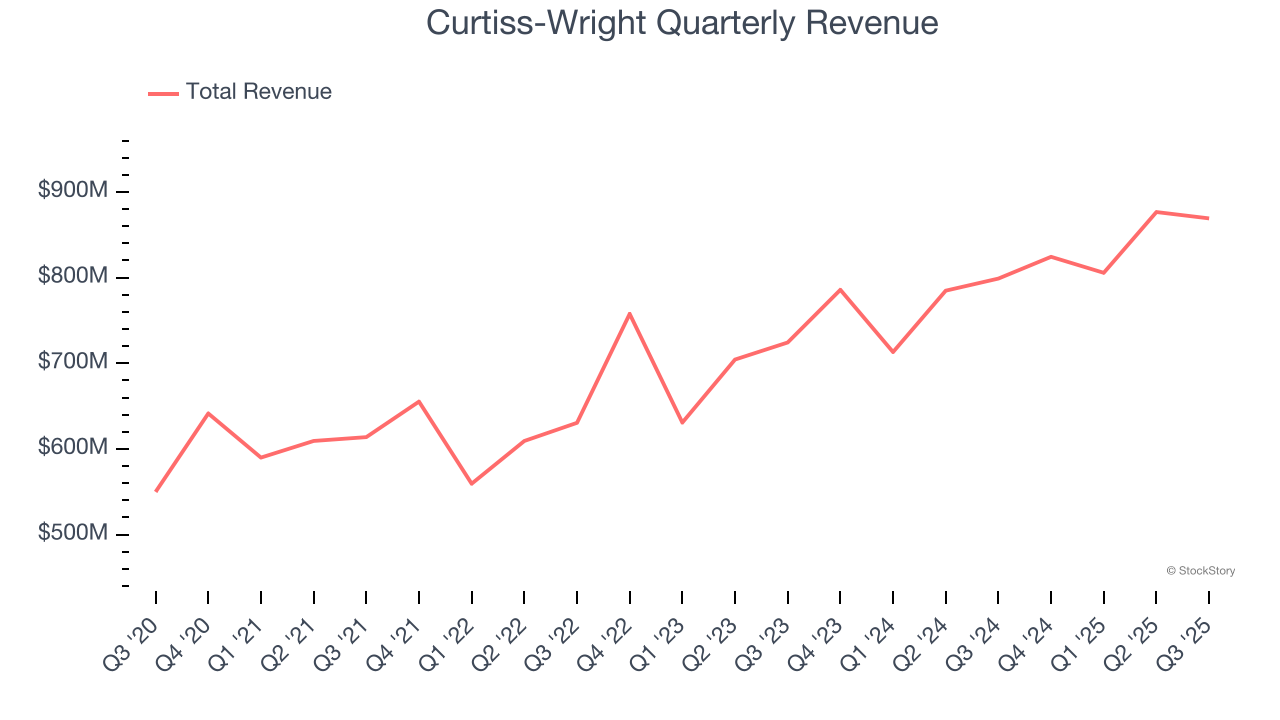
Long-term growth is the most important, but within industrials, a half-decade historical view may miss new industry trends or demand cycles. Curtiss-Wright’s annualized revenue growth of 9.5% over the last two years is above its five-year trend, suggesting its demand recently accelerated. 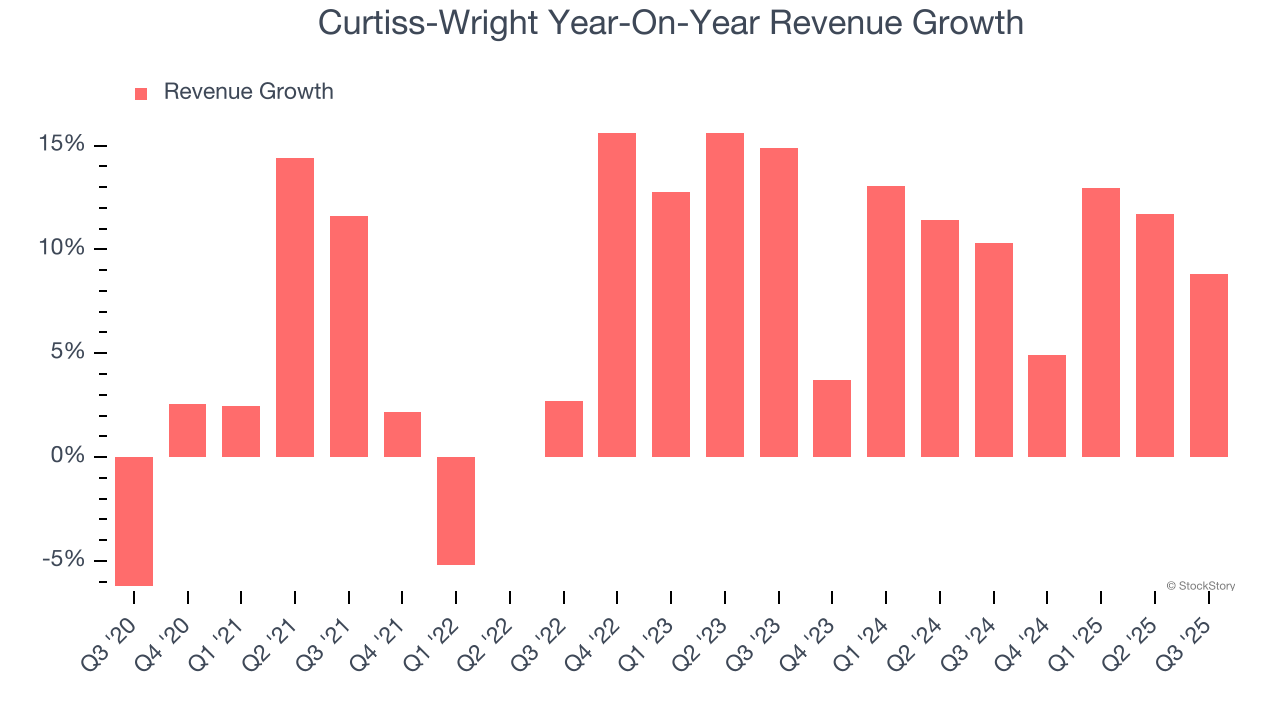
We can dig further into the company’s revenue dynamics by analyzing its most important segments, Product and Services, which are 85% and 15% of revenue. Over the last two years, Curtiss-Wright’s Product revenue (aerospace & defense technology) averaged 10.2% year-on-year growth while its Services revenue (testing, maintenance, consulting) averaged 6.9% growth. 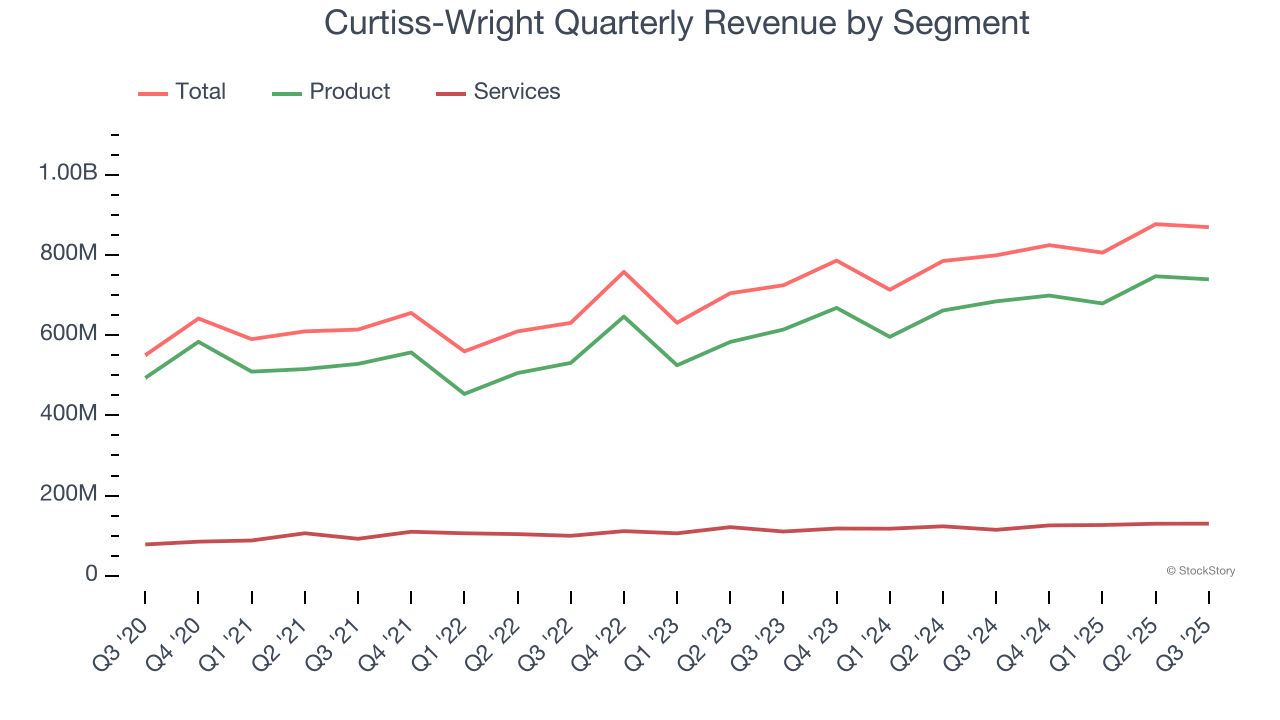
This quarter, Curtiss-Wright grew its revenue by 8.8% year on year, and its $869.2 million of revenue was in line with Wall Street’s estimates.
Looking ahead, sell-side analysts expect revenue to grow 7% over the next 12 months, a slight deceleration versus the last two years. This projection is underwhelming and implies its products and services will see some demand headwinds. At least the company is tracking well in other measures of financial health.
While Wall Street chases Nvidia at all-time highs, an under-the-radar semiconductor supplier is dominating a critical AI component these giants can’t build without. Click here to access our free report one of our favorites growth stories.
Operating Margin
Operating margin is an important measure of profitability as it shows the portion of revenue left after accounting for all core expenses – everything from the cost of goods sold to advertising and wages. It’s also useful for comparing profitability across companies with different levels of debt and tax rates because it excludes interest and taxes.
Curtiss-Wright has been a well-oiled machine over the last five years. It demonstrated elite profitability for an industrials business, boasting an average operating margin of 16.5%.
Analyzing the trend in its profitability, Curtiss-Wright’s operating margin rose by 3.6 percentage points over the last five years, as its sales growth gave it operating leverage.
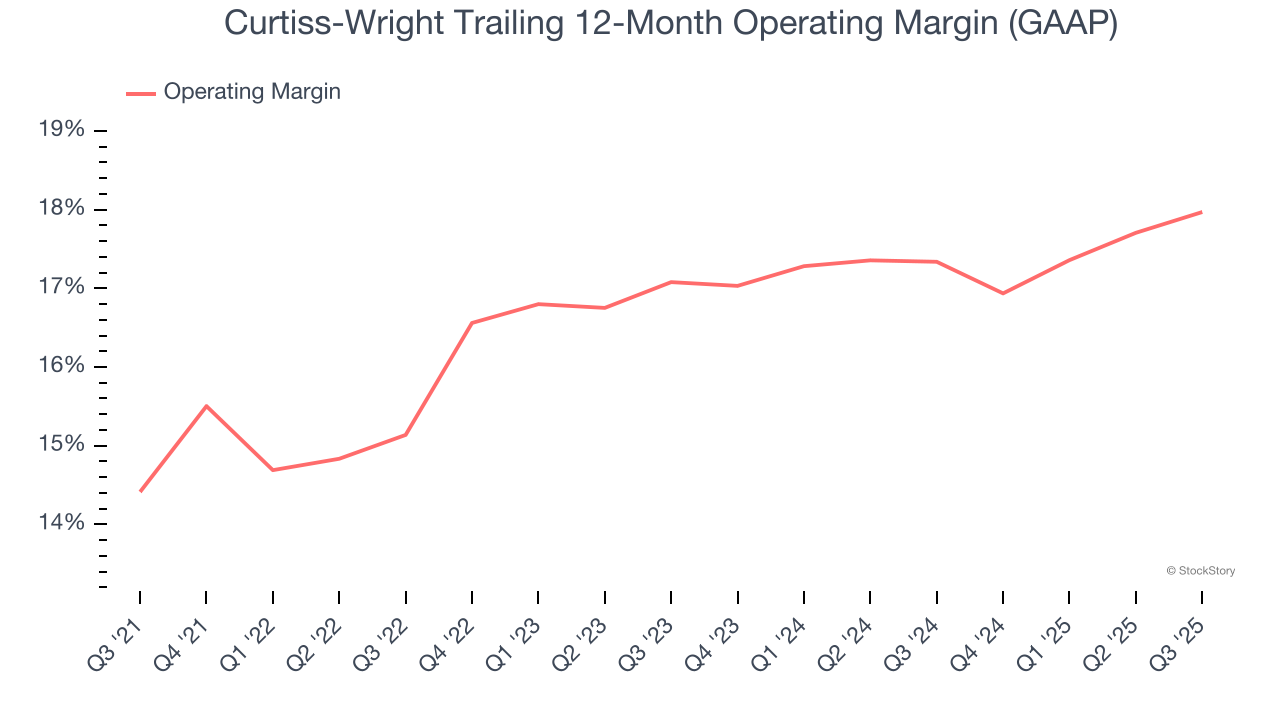
In Q3, Curtiss-Wright generated an operating margin profit margin of 19.1%, in line with the same quarter last year. This indicates the company’s overall cost structure has been relatively stable.
Earnings Per Share
Revenue trends explain a company’s historical growth, but the long-term change in earnings per share (EPS) points to the profitability of that growth – for example, a company could inflate its sales through excessive spending on advertising and promotions.
Curtiss-Wright’s EPS grew at a remarkable 14% compounded annual growth rate over the last five years, higher than its 8.1% annualized revenue growth. This tells us the company became more profitable on a per-share basis as it expanded.
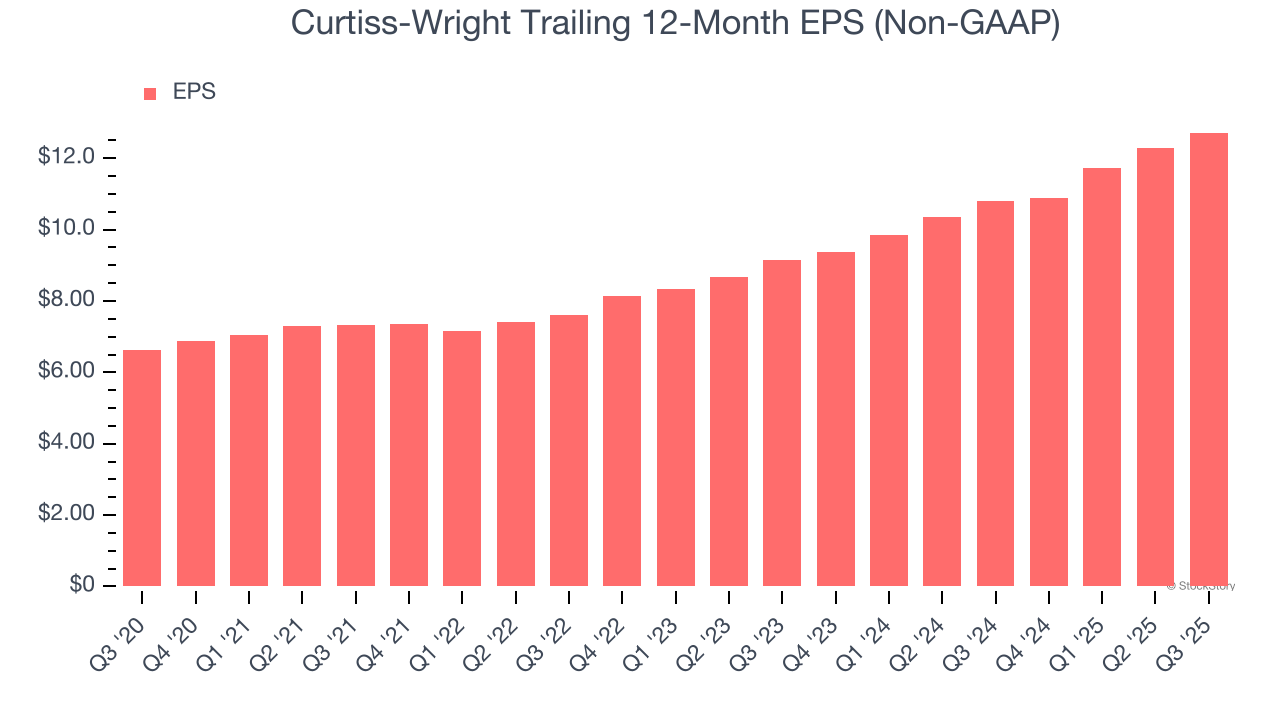
Diving into Curtiss-Wright’s quality of earnings can give us a better understanding of its performance. As we mentioned earlier, Curtiss-Wright’s operating margin was flat this quarter but expanded by 3.6 percentage points over the last five years. On top of that, its share count shrank by 9.9%. These are positive signs for shareholders because improving profitability and share buybacks turbocharge EPS growth relative to revenue growth. 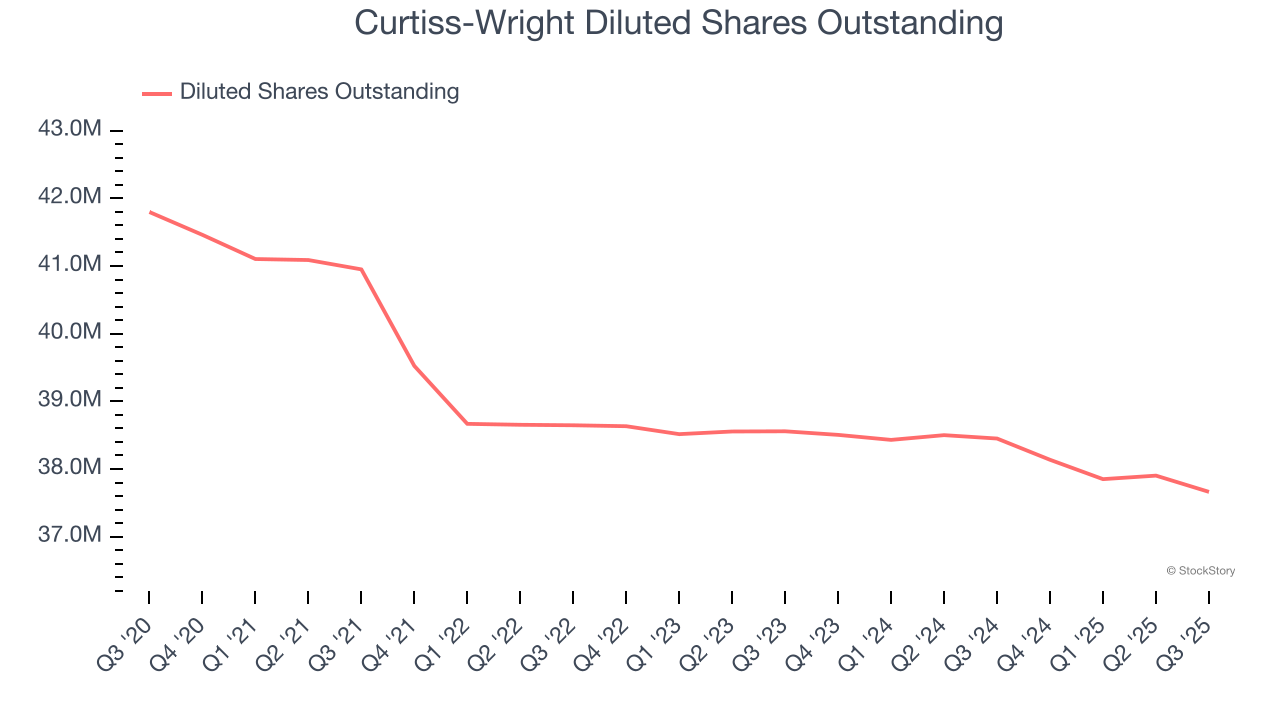
Like with revenue, we analyze EPS over a shorter period to see if we are missing a change in the business.
For Curtiss-Wright, its two-year annual EPS growth of 18% was higher than its five-year trend. We love it when earnings growth accelerates, especially when it accelerates off an already high base.
In Q3, Curtiss-Wright reported adjusted EPS of $3.40, up from $2.97 in the same quarter last year. This print beat analysts’ estimates by 3.3%. Over the next 12 months, Wall Street expects Curtiss-Wright’s full-year EPS of $12.72 to grow 8.9%.
Key Takeaways from Curtiss-Wright’s Q3 Results
It was good to see Curtiss-Wright provide full-year EPS guidance that slightly beat analysts’ expectations. We were also glad its EPS outperformed Wall Street’s estimates. Overall, this print had some key positives. The stock remained flat at $587 immediately following the results.
So should you invest in Curtiss-Wright right now? When making that decision, it’s important to consider its valuation, business qualities, as well as what has happened in the latest quarter. We cover that in our actionable full research report which you can read here, it’s free for active Edge members.





